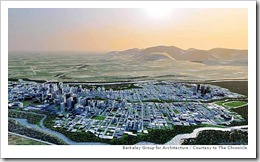The late 90’s and the first decade of the 21st century can be rightly called the glory years of the Skyscraper Race. Countries tried to outdo each other in claiming the tallest skyscraper status. Before this boom, the Sears Towers in Chicago, USA held the claim for nearly 3 decades.
All that went for a toss as Asian countries caught on to this craze. The Petronas became the tallest building for a few years, only to be eclipsed by Taipei 101 in Taiwan. And then came the big kahuna of tall buildings, the Burj Khalifa.
And this is just the race for the top position. Change it to the top ten and there are dozens of buildings all across Asia, North America, and Russia that try to reach for the skies.
In all this, India is prominently absent.
Monika Halan writes a very well-laid out article titled: Reaching for the Sky: How Tall is my country.
She concludes
… it does not look as if India or Indians are unduly worried about failing on another parameter of global ranking. The lack of interest or even public debate on getting India on the tall building map could mean several things. One, we are not at the stage of economic growth where having the tallest building becomes something to think about. Two, there is no massive speculative real estate bubble in the country and cheap money is certainly not an issue. Three, the argumentative Indian does not need the prop of an icon of American culture to define India’s identity or its place in the world. Or it could just be that we are so sure that a fire in the tallest building will end in disaster with the fire engines (that can reach all of 10 storeys) stuck in a traffic jam caused by a broken-down cycle on the main road. Nope, we don’t even want to go that way.
Tall buildings serve their purpose in urban areas. Contrary to popular thinking they can be more sustainable in all aspects than their height challenged counterparts. And if India takes that road and goes tall, all power to the builders. But if its just to get bragging rights, then its a waste of time, money and opportunity.
 Green and intelligent buildings are fast becoming the norm as developers and buyers see concrete value in them.
Green and intelligent buildings are fast becoming the norm as developers and buyers see concrete value in them. 